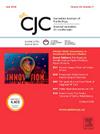加拿大心血管学会当代戒烟方法临床实践更新
IF 5.8
2区 医学
Q1 CARDIAC & CARDIOVASCULAR SYSTEMS
引用次数: 0
摘要
在加拿大,吸烟是可预防疾病和死亡的主要原因。吸烟者的预期寿命平均比不吸烟者短10年。它是心血管疾病(CVD)最重要的可改变危险因素,使腹主动脉瘤、冠状动脉疾病、缺血性中风和外周动脉疾病的风险增加一倍。戒烟是临床实践中最有效的预防干预措施。戒烟1年内,心血管事件的风险降低50%;15年后,其风险与从不吸烟的人相同。那些在40岁之前戒烟的人的预期寿命与从不吸烟的人相似。戒烟是每个卫生保健提供者的基本责任,必须是所有临床环境中的优先事项。所有患者必须得到系统的识别、治疗,并安排充分的随访。建议应简短、清晰、明确,以个性化和不加评判的方式告知吸烟者吸烟的危害和戒烟的益处。它应该与药物治疗相结合,因为这可以使成功的可能性增加近三倍。卫生保健从业人员应该像管理高血压或血脂异常等其他心血管疾病风险因素一样,轻松地管理戒烟和开始药物治疗。本文章由计算机程序翻译,如有差异,请以英文原文为准。
Canadian Cardiovascular Society Clinical Practice Update on Contemporary Approaches to Smoking Cessation
Smoking tobacco is the leading cause of preventable disease and death in Canada. Life expectancy of those who smoke is on average 10 years shorter than those who do not smoke. It is the most important modifiable risk factor for cardiovascular disease (CVD), doubling the risk of abdominal aortic aneurysm, coronary artery disease, ischemic stroke, and peripheral arterial disease. Smoking cessation is the single most powerful preventative intervention in clinical practice. Within 1 year of smoking cessation, the risk of CVD events decreases by 50%; after 15 years, the risk is the same as that of someone who has never smoked. Those who quit by age 40 have a life expectancy similar to that of people who have never smoked. Smoking cessation is a fundamental responsibility of every health care provider and must be a priority in all clinical settings. All patients must be systematically identified, treated, and have sufficient follow-up arranged. Advice should be brief, clear, and unambiguous to inform people who smoke about the harms of smoking and the benefits of cessation, in a personalized and nonjudgemental manner. It should be combined with pharmacotherapy because this can increase the likelihood of success by almost threefold. Health care practitioners should be as comfortable managing smoking cessation and initiating pharmacotherapy as they would be managing other CVD risk factors like hypertension or dyslipidemia.
求助全文
通过发布文献求助,成功后即可免费获取论文全文。
去求助
来源期刊

Canadian Journal of Cardiology
医学-心血管系统
CiteScore
9.20
自引率
8.10%
发文量
546
审稿时长
32 days
期刊介绍:
The Canadian Journal of Cardiology (CJC) is the official journal of the Canadian Cardiovascular Society (CCS). The CJC is a vehicle for the international dissemination of new knowledge in cardiology and cardiovascular science, particularly serving as the major venue for Canadian cardiovascular medicine.
 求助内容:
求助内容: 应助结果提醒方式:
应助结果提醒方式:


